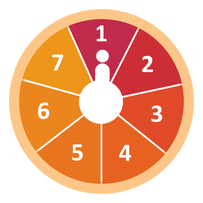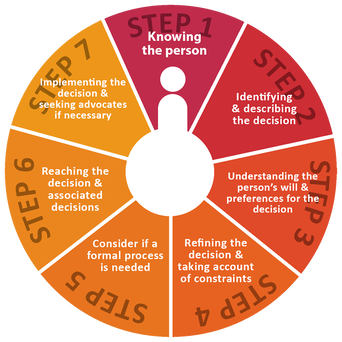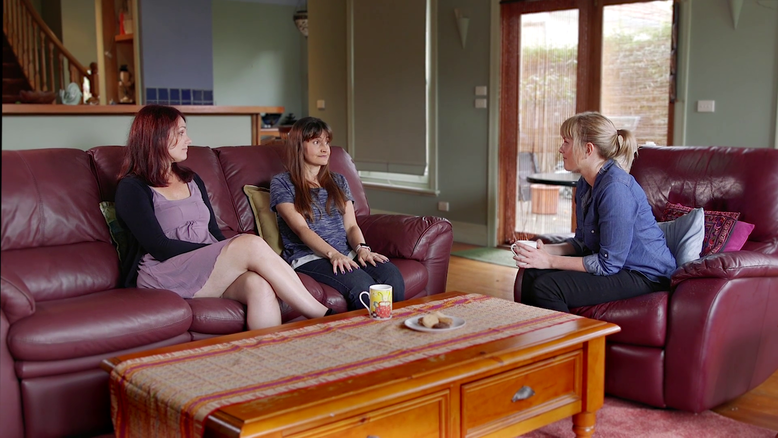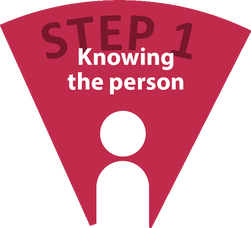|
In this module you will learn that:
The 7 Steps in the Framework are shown in Figure 2.
|
This talk video is an introduction to the steps in the Framework.
Decision Making Supporters
There is often more than one person involved in supporting a person to make decisions. The same people may not always be involved.
Who is involved will depend on the person and the type of decision.
There is usually a lead or primary supporter for any decision, but there will also be others involved. In this way, a network of supporters can exist.
Different supporters bring different perspectives and knowledge about the person which enables the person’s preferences to be kept at the heart of the decision making process.
Effective Supporter Characteristics
The influence of supporters on decision making can be enabling or disabling. Supporters need to be aware of the effect that they have when providing support for decision making.
When piloting the Framework, workshop participants expressed the characteristics or traits that they associated with being an effective supporter.
These included being:
- Trustworthy
- Honest
- Reliable
- Giving advice and not telling me what I should do
- Following through: not making promises they can’t keep
- Encouraging
- Positive
- Believing in the person: they can do this
- A good problem solver: they think of solutions rather than focus on obstacles
Can you see any relation between this list of characteristics and your responses to Activity 1, Question 2?
For some supporters, a shift from a stance of “what do I think is best?” for the person they are supporting to “how can I understand what their preferences are?” will be required.
Before we proceed to learn about the Steps in the Framework, this activity asks you to pause and reflect.
Think about someone with a cognitive disability who you support. With this person in mind, answer the following questions. Write in the downloadable workbook located in the Resources section.
- Who are the supporters in this person’s network?
- What are the things you do to support this person with decision making?
- What have you found to be challenging about supporting this person to make decisions?
- What have you found works well in supporting this person to make decisions?
- Which Steps in the Framework (Figure 2) have you used in your own support role?
Learning About the Framework's Steps
You now know that there are 7 steps to the Framework. You will learn about each of these in more detail.
To get started on Step 1 Knowing the person select the button below.
To get started on Step 1 Knowing the person select the button below.






